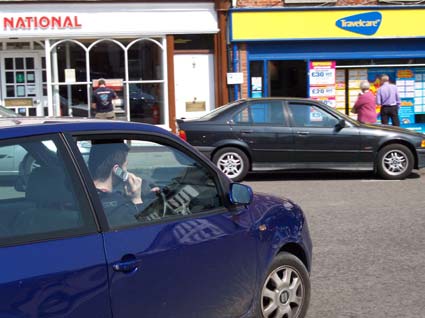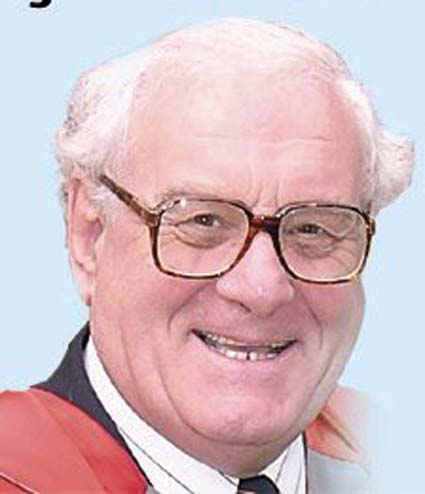Mind how you go, remember there is always some other idiot doing something just as stupid as you are!
Most vehicle crashes are caused by two road users both convinced that no one else will be making the same mistake as they do; and certainly NOT in the same place and at the same time.
Some people never learn .... they never get a chance.
Meanwhile we can welcome the news that speed cameras clocked up another annual record of speedsters in the last twelve months; not so welcome is the news that the standard criteria for speed camera siting has been changed. Instead of needing to claim that this road site had been the scene of serious injuries and road deaths in the past three years, Camera Safety Partnerships only need to guess that the cameras on this site will catch plenty of motorists whose eyes are firmly fixed on the road traffic and conditions ahead and not on their speedometers.
Those drivers who keep their eyes on the speedometer probably won't be caught out by the cameras; but they might ge t hit the back by a following driver taken by surprise at sudden braking.

Welcome also to the second half of January 2007: a guest from the United States and I have spent the last two days putting the driver education world to rights. If only the message could be read by those with the power and the will to make essential changes. Here is what he said to me:
Hello! My name is Joe Pauswinski. I am the Past President of the Driving School Association of the Americas (DSAA), which represents the 2500 schools in the United States and Canada. I have been visiting the UK since 1987, about 4 times each year. One of the things about driver training which has always amazed me is how numbers work against the proper training of students. Last year, in the UK there were approximately 780,000 initial driver applicants divided amongst the 41,101 registered ADI's. This means that each ADI can expect an average of slightly less than 19 tuition pupils for the entire year. It seems difficult to imagine that the average ADI can generate a living wage. This would mean that driver training and road safety becomes a part-time or truly low wage profession. In America, a portion of all our seminars are dedicated to business practices. The idea is that even if you are the most modern, up-to-date, professional operation, you will do no one any good if you are out of business.
In this week's Radio Times, there is an offer for one free hour of driving instruction. The coupon states the value of this at £25.00. I am told that this is actually a high rate and that it is possible to receive lessons for as little as £18. If the traditional breakdown of costs for a £25 lesson are £8 for vehicle costs (car/depreciation, gasoline, tires, repairs etc), £8 for administration (pension[ha-ha], insurance, telephone, advertising, bookkeeping etc), and £9 for salary/instructor fees. If you drop the tuition to £18, that only leaves £2 for income. A tradional joke among American driving school owners is: "I'll lose a dollar on each lesson, but I'll make it up in volume." If you do the maths it doesn't work out.
I understand that you are considering offering theory insturction to high school students at age 16 or 17. In the US, most states have this as mandatory. Before obtaining an initial license, the students must have a course consisting of AT LEAST 30 hours of theory and 6 hours of driving. In my own company, this initial teen training accounts for almost 60% of our total revenue. It opens the area of contracting with a public or private school to offer this instruction, which in turn means a notable increase in enrolled students. If this sounds like a dream to you, know that it is actually being done in Britain TODAY. The plusses and minuses of this are a topic which would require a long discussion, but I am certainly happy to answer any questions. You can contact me through this website at www.derf.org.uk
North America is like 64 different countries. We have 50 US states, 10 Canadian provinces and 4 territories.. Each of these has unique rules and regulations. In the UK, you have the advantage of only one Driving Manual and one standardized test. This, along with a strong and active organization like the DIA, can give you all the opportunity for great success. On behalf of road safety, please use this opportunity wisely.
The second half of the first month has continued with the clamour for changes to the driver training system in this country. Historically - well for the past 70 years - has been clilent led. Unfortunately the old system does not fit in with modern (and indeed European) practice and requirements. Driving Tests are fully detailed and explained to candidates every step of the way; candidates can buy (from the testing authority) copies of the theory tests with detailed answers, killing any opportunity for sensible theory training: what makes this worse is that once a candidate has passed the theory test, as far as they are concerned they have no need to read or study any more. All they want is to practise driving round a few driving test routes until they can memorise enough to scrape a pass. AND AT THAT STAGE, NEW DRIVERS ASSUME THEY NEED TO LEARN NOTHING MORE.

"It wasn't my fault - I was talking to my girl friend at the time!"
According a business colleague of mine from the US, we can have a detailed understanding of how new drivers cope in the United States. New drivers, especially youngsters, can obtain their learners permit in advance of taking their practical lessons, but they must take a set number of hours behind the wheel before they can apply to take the test. However, the most serious difference between tests in the UK and in the USA is that when learner drivers get their pass certificate in the US they are fully aware of their lack of skill and continue to train and learn. In the UK so many youngsters throw away their L plates and with it any desire to learn anything more.

This UK Government is considering what steps they can take to ensure driver training becomes more effective.
The simple, blindingly obvious, fact of life that must face every government Minister and Member of Parliament is that regardless of whatver laws and regulations are imposed, people will still learn to drive from the age of three onwards, simply by imitating all they see what their parents and peers are like whilst the youngsters are driving. Guess who teaches new drivers to ignore speed limits? Their parents and peers.
Therefore the answer to when should the Government legislate on the best time to start driver and road user education it must be whilst youngsters are at school. When I was a school teacher - and continuing when I became a driver trainer - it still remains obvious that attitudes learned in the classroom can be carried on in the car.
Mummy always taught you to be courteous to all other people around you. Apply those same principles to being a driver and you cannot fail to realise the essential need for youngsters to be taught and tested all the basic road safety principles.
SAFE DRIVING FOR LIFE is the Department for Transport's motto.
Unfortunately bad, aggressive and unintelligent behaviour develops long before a provisional driving licence is available.
The sad fact in road safety education is that safe driving messages are usually only read by the really safe drivers who regularly put their driving to the test by taking advanced and better driving courses and tests, or by those who have a commercial need to study better driving techniques, such as company drivers.
No one really knows how to get the message to those drivers who are destined to figure in the statistics for the next six months. But intelligent DRIVER EDUCATION is the starting point.
Drive safely, the life in your hands is your own
Dr Peter Russell - Professor of Road Safety Education
The UK’s only Research Doctor in Driver Education - with 49 years
PRACTICAL experience of driver training and testing.

